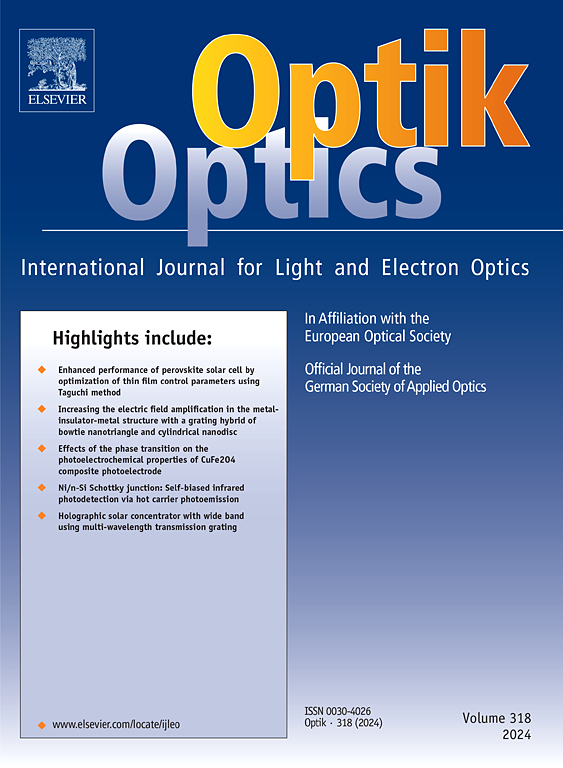Backscattering properties of trigonal Ge-Au Janus nanoparticles with different ambient refractive indices in the visible solar spectrum
IF 3.1
3区 物理与天体物理
Q2 Engineering
引用次数: 0
Abstract
To investigate the backscattering characteristics in the solar spectrum, the Discrete Dipole Approximation (DDA) method was employed to simulate backscattering efficiency. For Ge-Au Janus nanoparticles (JNPs), the influence of particle size, environmental medium, and the metal volume ratio on the backscattering efficiency were investigated in this work. It was found that the backscattering peak of Ge-Au-JNPs undergoes a redshift with increasing environmental medium, accompanied by a significant enhancement in peak intensity. Additionally, by adjusting the volume ratio of Ge-Au metal, it was found that the peak of backward scattering efficiency reached a maximum at 652 nm for an ambient refractive index of m= 1.33 and a ratio of 1:4. This indicates that the backscattering properties of Ge-Au Janus nanoparticles are tunable by the surrounding refractive index and the component ratio of the Janus nanoparticles, providing an optimization method for applications such as solar energy harvesting and optical sensing.
求助全文
约1分钟内获得全文
求助全文
来源期刊

Optik
物理-光学
CiteScore
6.90
自引率
12.90%
发文量
1471
审稿时长
46 days
期刊介绍:
Optik publishes articles on all subjects related to light and electron optics and offers a survey on the state of research and technical development within the following fields:
Optics:
-Optics design, geometrical and beam optics, wave optics-
Optical and micro-optical components, diffractive optics, devices and systems-
Photoelectric and optoelectronic devices-
Optical properties of materials, nonlinear optics, wave propagation and transmission in homogeneous and inhomogeneous materials-
Information optics, image formation and processing, holographic techniques, microscopes and spectrometer techniques, and image analysis-
Optical testing and measuring techniques-
Optical communication and computing-
Physiological optics-
As well as other related topics.
 求助内容:
求助内容: 应助结果提醒方式:
应助结果提醒方式:


